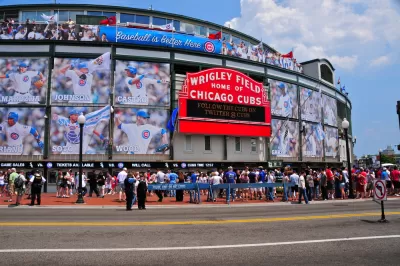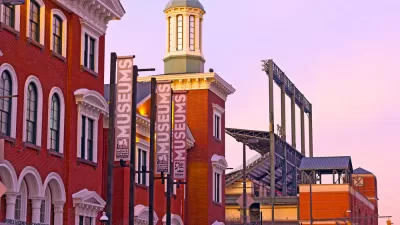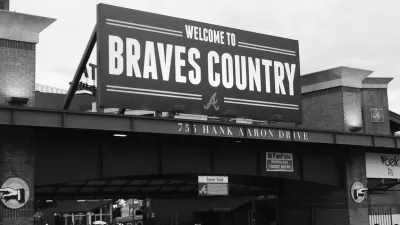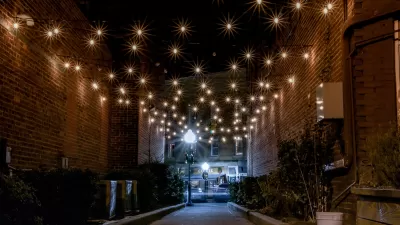A new book looks at the evolution of American ballparks and the changes that have mirrored urbanism.

Ballpark: Baseball in the American City is a new book from Paul Goldberger that traces the history of ballparks in the United States. "From the utilitarian beauty of early 20th-century ballparks like Chicago’s Wrigley Field and Boston’s Fenway Park—each nestled into its respective neighborhood—to the doughnut-shaped, concrete structures that sprouted in suburbia after World War II, baseball’s growth has neatly paralleled the rise, fall, and rise again of U.S. cities," says Patrick Sisson.
The first ballparks sprung up in cities, and they were very enmeshed in the urban landscape. In postwar America, they moved to the suburbs, writes Sisson. "This was the time of the 'concrete doughnuts,' which Goldberger argues were bland, multipurpose, municipal parks often set far from the city center, ones like Oakland Coliseum, Fulton County Stadium in Atlanta, and Philadelphia’s Veterans Stadium."
Ballparks then returned to the city, along with urban renewal. The most recent era, according to Goldberger, is one where ballparks are part of commercial and entertainment megadevelopments. "With Atlanta’s new park, as well as recent developments around the St. Louis ballpark and Chicago’s Wrigley Field—where the surrounding Wrigleyville neighborhood is gradually being turned into a more generic, mall-like destination—Goldberger is disappointed to see team owners trying to control the city inside and outside of the gate," notes Sisson.
FULL STORY: Looking at the changing American city through its ballparks

Maui's Vacation Rental Debate Turns Ugly
Verbal attacks, misinformation campaigns and fistfights plague a high-stakes debate to convert thousands of vacation rentals into long-term housing.

Planetizen Federal Action Tracker
A weekly monitor of how Trump’s orders and actions are impacting planners and planning in America.

Chicago’s Ghost Rails
Just beneath the surface of the modern city lie the remnants of its expansive early 20th-century streetcar system.

Bend, Oregon Zoning Reforms Prioritize Small-Scale Housing
The city altered its zoning code to allow multi-family housing and eliminated parking mandates citywide.

Amtrak Cutting Jobs, Funding to High-Speed Rail
The agency plans to cut 10 percent of its workforce and has confirmed it will not fund new high-speed rail projects.

LA Denies Basic Services to Unhoused Residents
The city has repeatedly failed to respond to requests for trash pickup at encampment sites, and eliminated a program that provided mobile showers and toilets.
Urban Design for Planners 1: Software Tools
This six-course series explores essential urban design concepts using open source software and equips planners with the tools they need to participate fully in the urban design process.
Planning for Universal Design
Learn the tools for implementing Universal Design in planning regulations.
planning NEXT
Appalachian Highlands Housing Partners
Mpact (founded as Rail~Volution)
City of Camden Redevelopment Agency
City of Astoria
City of Portland
City of Laramie





























